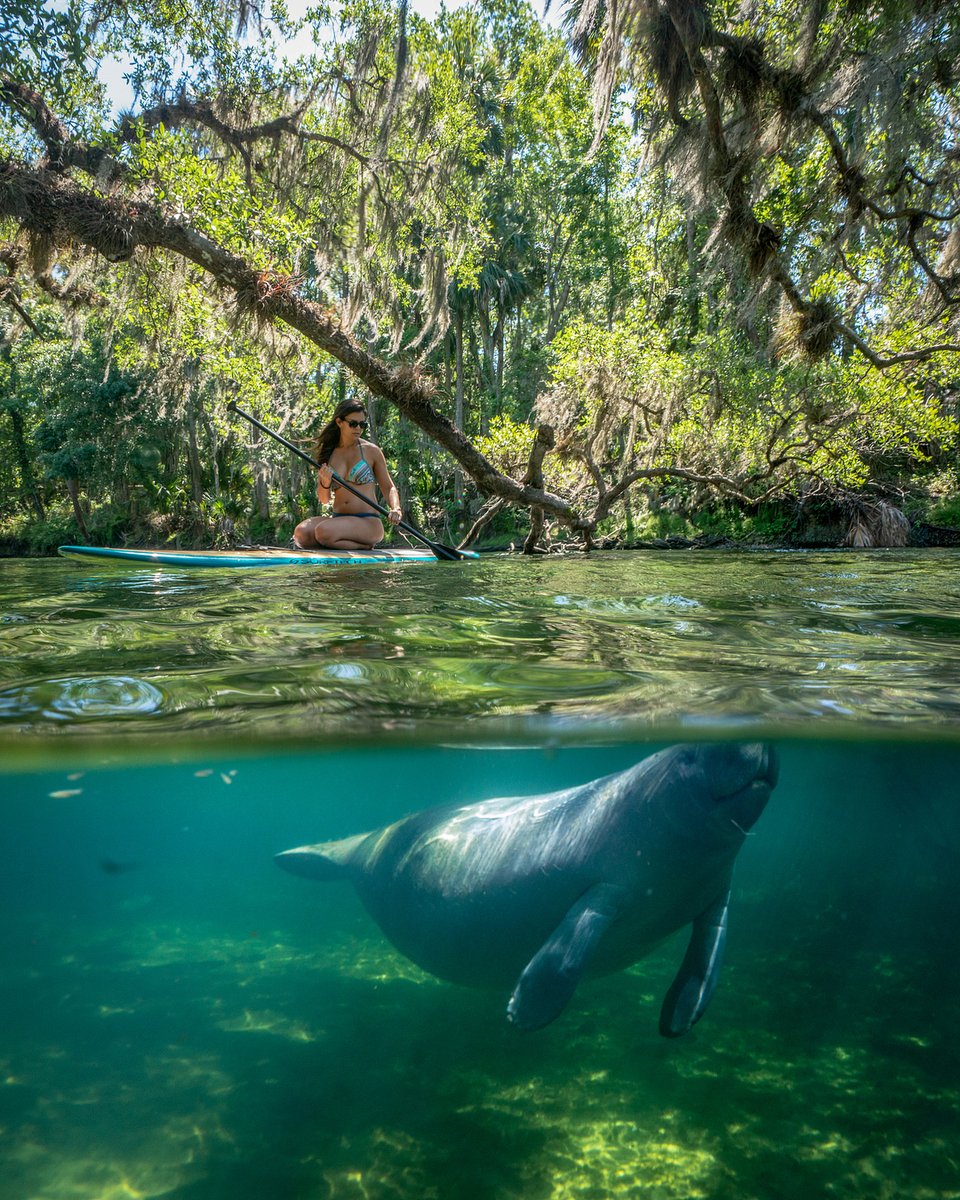Manatee Facts for Fun – Part 3
A Florida manatee (West Indian Manatee) enjoying the warm spring waters at Crystal River as a paddle boarder observes.
Greetings! This is my third blog installment talking about some very cool and awesome manatee facts.
Did you know that manatees are actually nomadic? This means we love wandering around with no particular place to go. As long as there is plenty of seagrass for us to eat! In fact, manatees really do not have any permanent homes. We just enjoy living in warm water that is rather shallow. Why you ask?
Shallow waters allow sunlight to pass through to the seagrass and other water plants growing on the sandy bottom. The sunlight contributes to photosynthesis, a process converting light to biochemical energy, which keeps the plants alive. Add to that, manatees are actually herbivores. That means we eat only plants in our diets. These include, seagrass, sea lettuce and water hyacinths. And did I say eat? Oh yeah – we sure can eat. As a matter of fact, a manatee can eat between 10 percent to 15 percent of its body weight every day! Now let’s do the math…
…I weigh in right at one thousand pounds. Now take 15 percent of one thousand pounds, and you’ll get 150 pounds. That means I’ll eat 150 pounds of seagrass everyday so I can play, explore, and stay alive. Another way to look at it is I can easily eat 150 heads of iceberg lettuce every day!
Ok – you may ask so why do manatees eat this much food every day? That’s because manatees have a very slow metabolism. And this large amount of food gives manatees the energy they need to stay warm, swim, and have a jolly good time. Add to that, you may think manatees are fat. After all, the manatee’s body looks like a big submarine that tapers down to a paddle-shaped tail. However, manatees are not fat at all! The manatee only has a very thin layer of fat that surrounds its body. And since the manatee is warm-blooded, in the winter when the water temperatures fall below 68 degrees Fahrenheit, it must navigate to warmer 72 degree Fahrenheit Florida waters. These areas include; Blue Spring State Park, Crystal River or the warm water outflows from power plants such as Florida Power and Light’s Manatee Lagoon in West Palm Beach, Florida and Tampa Electric’s Manatee Viewing Center in Apollo Beach, Florida.
Stay tuned for more awesome manatee facts!
If you are in Florida and you see a sick or injured manatee, please call the Florida Fish and Wildlife Conservation Commission at: 1-888-404-FWCC. They are the folks who are responsible for rescuing us in Florida.
Here’s the Save the Manatee Clublink to learn more about manatees …
Here’s a cool link for you to learn more about how we’re rescued and brought into rehabilitation …
~ Kobee Manatee
Manatee Facts for Fun – Part 1 (January 23, 2019)
Manatee Facts for Fun – Part 2 (January 31, 2019)
